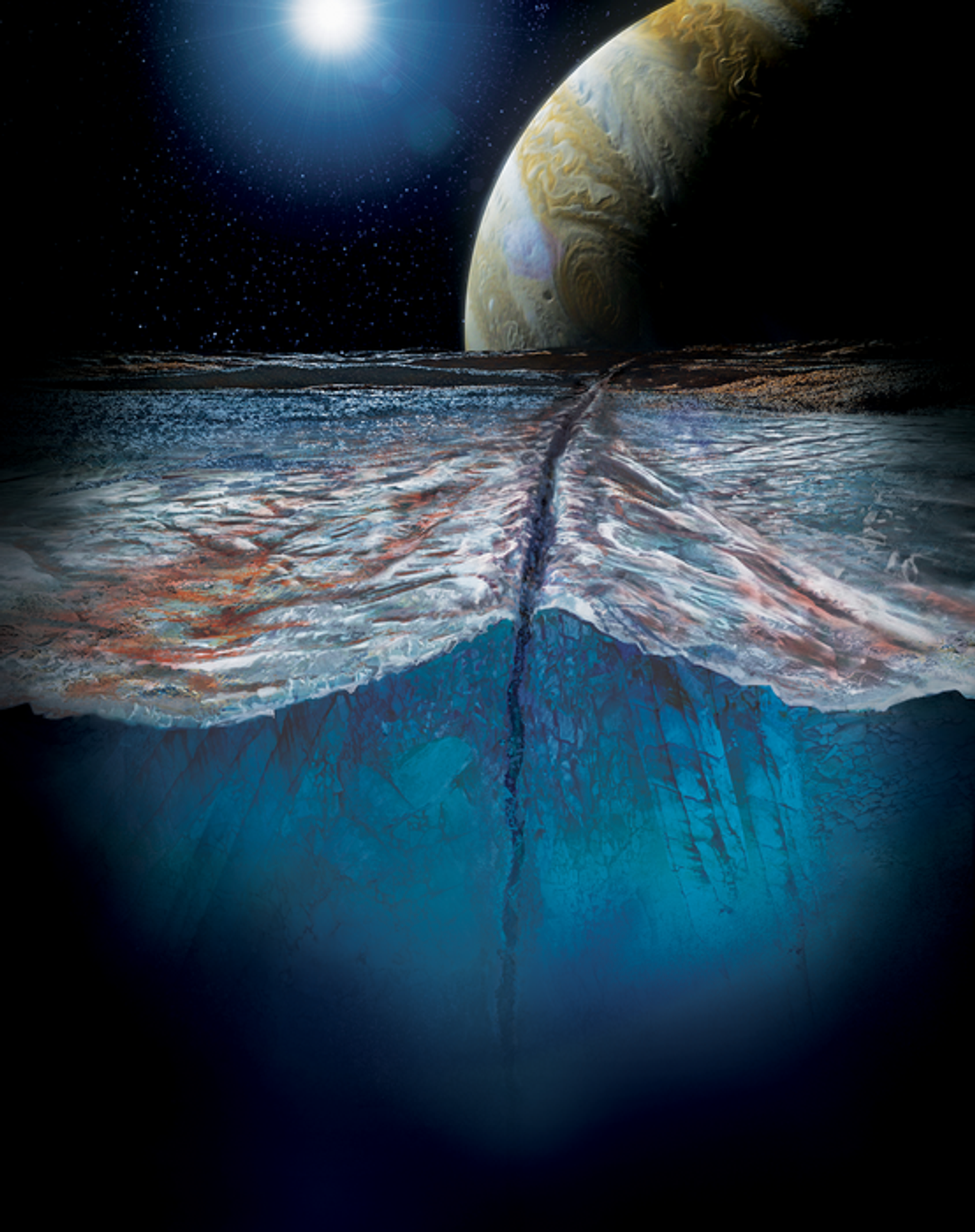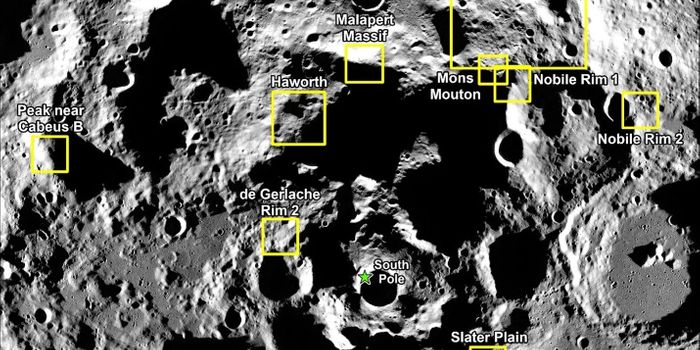Icy Moon Radar Properties Explained with New Model
Icy satellites have become a hot topic for astrobiology and the search for life beyond Earth due to their interior oceans. But what else makes them stand out from the larger rocky worlds like Earth? A pair of researchers from the Southwest Research Institute (SwRI) and NASA JPL hope to dive further into this after developing a model to explain the unique radar properties of icy moons orbiting Jupiter and Saturn, which involves their a phenomena known as coherent backscatter opposition effect (CBOE). This study holds the potential to help scientists better understand how the characteristics of icy worlds differ from their rocky counterparts.
Artist illustration of a ridge on Jupiter's moon, Europa. (Credit: NASA/JPL-Caltech/SwRI)
“Six different models have been published in an attempt to explain the radar signatures of the icy moons that orbit Jupiter and Saturn,” said Dr. Jason Hofgartner, who is a Senior Research Scientist at SwRI and first author of the study. “The way these objects scatter radar is drastically different than that of the rocky worlds, such as Mars and Earth, as well as smaller bodies such as asteroids and comets.” Scientists have observed some icy moons exhibit brightness in regions where darkness should be the stronger characteristic.
“When we look up at Earth's moon it looks like a circular disk, even though we know it's a sphere. Planets and other moons similarly look like disks through telescopes,” said Hofgartner. “While making radar observations, the center of the disk is very bright and the edges much darker. The change from center to edge is very different for these icy satellites than for rocky worlds.”
Studies of CBOE date back to the 1990s, but scientists debated the methods behind the phenomenon. Working with Dr. Kevin Hand of NASA JPL, the pair were able to produce a modified CBOE model, which helped explain all of the radar characteristics of icy satellites.
“I think that tells us that the surfaces of these objects and their subsurfaces down to many meters are very tortured,” said Dr. Hofgartner. “They’re not very uniform. Icy rocks dominate the landscape, perhaps looking somewhat like the chaotic mess after a landslide. That would explain why the light is bouncing in so many different directions, giving us these unusual polarization signatures.”
What new discoveries will scientists make about icy satellites and their characteristics in the coming years and decades? Only time will tell, and this is why we science!
Sources: Nature Astronomy, SwRI
As always, keep doing science & keep looking up!









